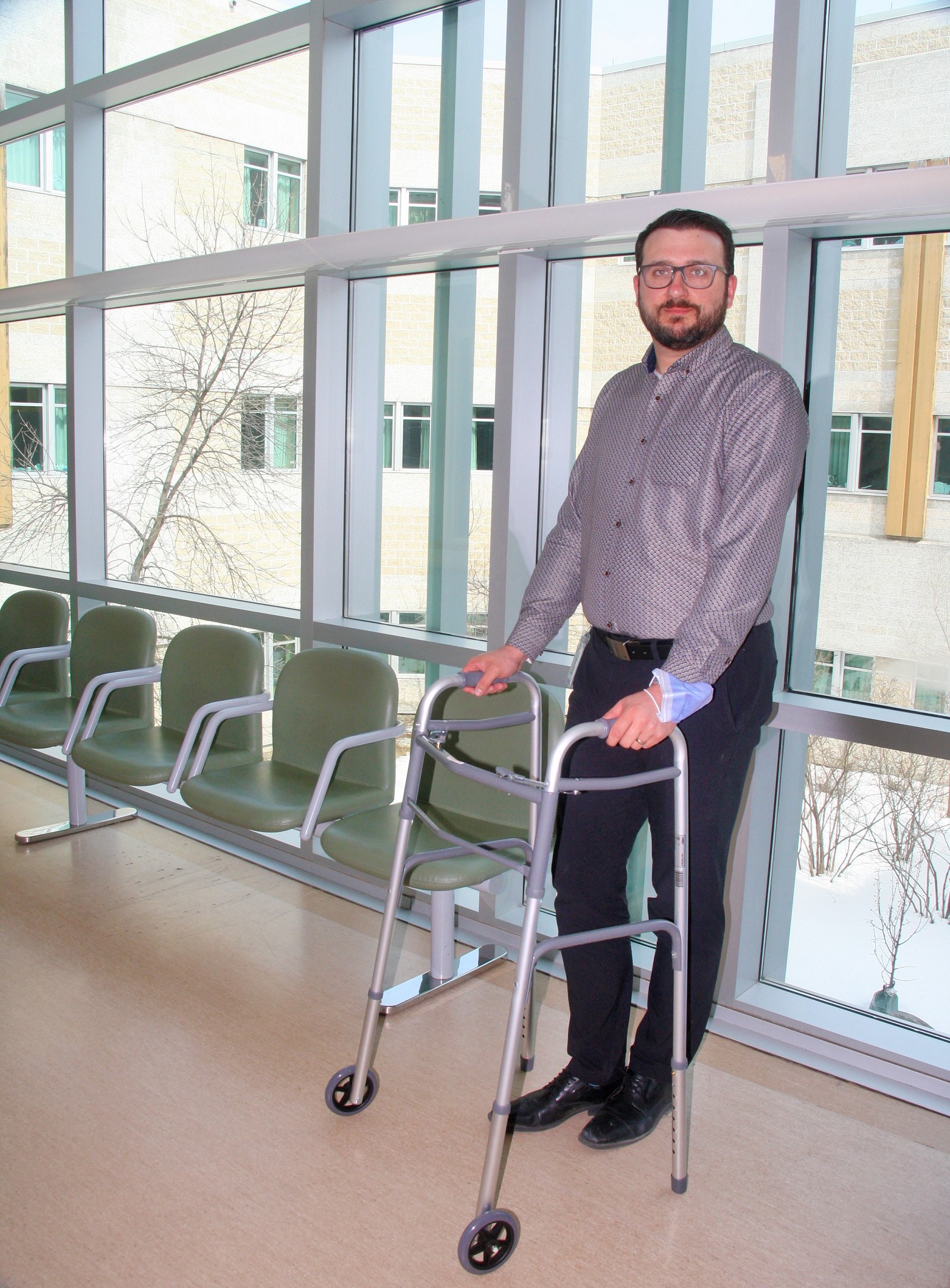Walkers Give Heart, Stroke Patients Confidence Thanks to Family CARE Grant
Published Monday, June 26, 2023

by Graham Strong
For those recovering from a stroke or a heart attack, one of the best medicines is getting up and walking as soon as possible. Moving around builds strength, reduces the risk of muscle loss, and in the case of stroke patients, can help reconnect pathways in the nervous system for better recovery. But many patients feel unsteady on their feet – and that lack of confidence could lead to falls and other dangerous situations.
Thanks to a Thunder Bay Regional Health Sciences Foundation Family CARE Grant, patients in the 2C unit at our Hospital can now move around more confidently with the purchase of 10 new walkers.
“Recently, so many more patients are using them that there is sometimes a wait, which impedes their recovery and rehabilitation,” said Matt Shonosky, Manager of the 2C Medical, Cardiology, and Regional Stroke Unit at the Thunder Bay Regional Health Sciences Centre. “As our population is ageing, we’re seeing many more people who require a walker or some sort of assistance after (a stroke or heart attack).”
The old “bed rest-only” philosophy of yesteryear no longer applies for most patients. Now, the focus is getting up and moving as soon as possible.
“Evidence shows that patients who stay in bed longer will have a longer recovery. But patients who get up faster actually will recover faster and more fully,” Shonosky said. “For our stroke and cardiac patients, we like to get them up within 24 hours unless there is something preventing them medically.”
Faster recovery also means shortened hospital stays before returning home or going to St. Joseph’s Care Group for rehabilitation.
Previously, staff sometimes had to hunt to find a walker. Thanks to the Family CARE Grant, these 10 walkers are now dedicated for 2C use so patients can get up and mobile faster.
Patients will be safer, too.
“We’ll see a lot of patients doing what we call ‘furniture walk’,” Shonosky said. “That can increase fall risk because a chair might give out and roll away or they lose grip on a sink or something.”
The walkers don’t just give stability; they give confidence.
“Even if the patient doesn’t need the walker for weight-bearing, just having it in their hands can give them confidence to move around on their own,” Shonosky said.
These all-purpose walkers are height-adjustable, lightweight, and can be configured with wheels, skis, or nothing at all, depending on the needs of the patient. They have a low profile which makes them great for moving around patient rooms, but they are strong and stable so patients are safer.
Shonosky said that many patients work with a physiotherapist or an occupational therapist after an event for more specialized recovery exercises. These new walkers won’t replace that specialized care, but add to it.
“Patients are more agile and more independent with the walkers. They can build endurance so that they feel comfortable doing things on their own and not relying on staff or others to do everything for them.”
Often, the best ideas for patient care needs come from the frontline staff who work with patients every day – and this is another example. Thanks to our generous donors, Family CARE Grants provide the funding needed to get these great ideas off the ground. You can help! Please donate online at www.healthsciencesfoundation.ca/donate or call our Donation Centre at 807-345-4673.
[photo Caption:]
Matt Shonosky, 2C Manager, demonstrates how the 10 strong but lightweight walkers purchased with a Family CARE Grant help cardiac and stroke patients get up and mobile faster and with confidence.